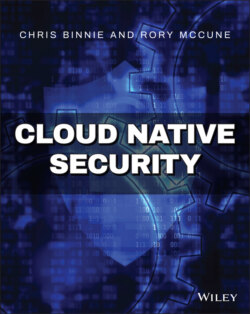Читать книгу Cloud Native Security - Chris Binnie - Страница 21
Other Containers
ОглавлениеA little-known fact is that serverless technologies also embrace containerization, or more accurately lightweight virtualization when it comes to AWS Lambda. Making use of KVM as mentioned earlier, AWS uses Firecracker to provide what it calls MicroVMs. When launched, AWS explicitly stated that security was its top priority and ensured that multiple levels of isolation were introduced to provide defense in depth. From a performance perspective, remarkably the MicroVMs can apparently start up in about an eighth of a second. An active Open Source project, Firecracker is an intriguing technology:
github.com/firecracker-microvm/firecracker
As mentioned earlier, the security model is a familiar one, according to the AWS site: “The Firecracker process is jailed using cgroups and seccomp BPF, and has access to a small, tightly controlled list of system calls.”
Apparently, at least according to this page on the AWS forums (forums.aws.amazon.com/thread.jspa?threadID=263968), there are restrictions applied to the containerized service such as limitations on varying kernel capabilities. These are dropped for security purposes and might include various syscalls like PTRACE, which allow the monitoring of and potentially the control of other processes. Other more obvious services, such as SMTP, are disallowed to prevent spam from leaving a function. And removing the ability to use the CAP_NET_RAW capability makes it impossible to spoof IP addresses or use raw sockets for capturing traffic.
Another approach to running containers in a more secure fashion is to lean on hardware virtualization to a greater degree. One of the earlier pioneers of containerization was CoreOS (known for a number of other products, such as etcd, which is prevalent in most modern Kubernetes distributions). They created a container runtime called rkt (which was pronounced “rock-it”), that is sadly now deprecated. The approach from rkt was to make use of KVM as a hypervisor. The premise (explained at coreos.com/rkt/docs/latest/running-kvm-stage1.html) was to use KVM, which provides efficient hardware-level virtualization, to spawn containers rather than systemd-nspawn (wiki.debian.org/nspawn), which can create a slim namespaced container. The sophisticated rkt offered what might be called hard tenancy between containers. This strict isolation enabled true protection for Customer B if Customer A was compromised; and although containers are, again, not virtual machines, rkt bridged a gap where previously few other security innovations had succeeded.
A modern approach being actively developed, similar to that of rkt, is called Kata Containers (katacontainers.io) via the Open Stack Foundation (OSF). The marketing strapline on the website confidently declares that you can achieve the “speed of containers” and still have the “security of VMs.” Along a similar vein to rkt, MicroVMs are offered via an Open Source runtime. By using hardware virtualization the isolation of containerized workloads can be comfortably assured. This post from Red Hat about SElinux alerations for Kara Containers is informative: www.redhat.com/sysadmin/selinux-kata-containers. Its customers apparently include internet giants such as Baidu, which uses Kata Containers in production, and you are encouraged to investigate their offering further.
Finally, following a slight tangent, another interesting addition to this space is courtesy of AWS, which, in 2020, announced the general availability of an Open Source Linux distribution called Bottlerocket (aws.amazon.com/bottlerocket). This operating system is designed specifically to run containers with improved security. The premise for the operational side of Bottlerocket is that creating a distribution that contains only the minimal files required for running containers reduces the attack surface significantly. Coupled with SElinux, to increase isolation between containers and the underlying host, the usual suspects are present too: cgroups, namespaces, and seccomp. There is also device mapper functionality from dm-verity that provides integrity checking of block devices to prevent the chances of advanced persistent threats taking hold. While time will tell if Bottlerocket proves to be popular, it is an interesting development that should be watched.
